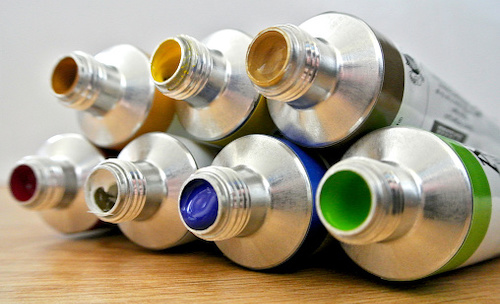Research Looks at Odor in Acrylic Paints
TUESDAY, JANUARY 29, 2019
Research out of Germany's Fraunhofer Institute for Process Engineering and Packaging has characterized the different odors of acrylic paints and identified the harmful odorous substances, a first for the industry.
“Besides the influence on human health, acrylic paints have been reported to emit an unpleasant and long-lasting odor,” according to the study’s introduction. “Despite these observations, there has been barely any research on the odor of paints, and little is known about the causative odor active compounds.
“To address this lack of knowledge, we aimed to identify the components responsible for the intense odor of acrylic paints.”
The Research
The volatile organic compounds of six different acrylic (artist) paints were analyzed using a dichloromethane (DCM)-based solvent extraction combined with gas chromatography-mass spectrometry (GC-MS), gas chromatography-olfactometry (GC-O) and heart-cut two-dimensional gas chromatography-mass spectrometry/olfactometry (2D-GC-MS/O).

 |
| elenacastaldi77 / Getty Images |
|
Research out of Germany's Fraunhofer Institute for Process Engineering and Packaging has characterized the different odors of acrylic paints and identified the harmful odorous substances, a first for the industry. |
The odorants with the highest impact on the fresh acrylic paint were determined by an odor extract dilution analysis and a sensory evaluation conducted by a trained panel to compare the analytical results with the overall olfactory impression of the paints.
The data was then used to determine the ingredients that contributed with highest impact to the unpleasant odor of fresh paint.
“Our goal was, accordingly, to provide the chemical basis that may help manufacturers to develop targeted avoidance strategies for off-odorants and potentially harmful constituents in acrylic paints, and to provide olfactory acceptable and safer products,” according to the study.
The six samples were divided into three groupings of one white paint containing titanium white pigment and one black paint containing carbon black. The first group, AP1, were lower-grade, “starter pack” paints chosen to represent the exposure to beginners. AP2 were samples among the best-sold paints and AP3 were paints specified as solvent-free and low-VOC.
The results were that the odorous substances were mainly identified as benzene derivatives (styrene, ethylbenzene, allylbenzene, propylbenzene), which give off a plastic-like and solvent-like odor.
In addition, polycyclic aromatic hydrocarbons (naphthalene, indane and tetralin derivatives) contributed to the plastic- and mothball-like odor, and acrylic monomers (butyl acrylate) were found to be responsible for a mushroom-like and geranium leaf-like odor.
“To reduce the unpleasant odor in acrylic paint and to minimize the potential risk of negative physiological effects on humans, the reduction of benzene derivatives, PAHs and acrylic monomers is advisable,” the study concludes.
“The results further indicate that the smell of fresh acrylic paint is not generally influenced by the pigments only, and does not necessarily depend on the color of the paint.”
Tagged categories: Acrylic; Coating chemistry; Coating Materials; Low odor; Low-VOC; Research and development; Solvent-free coatings







